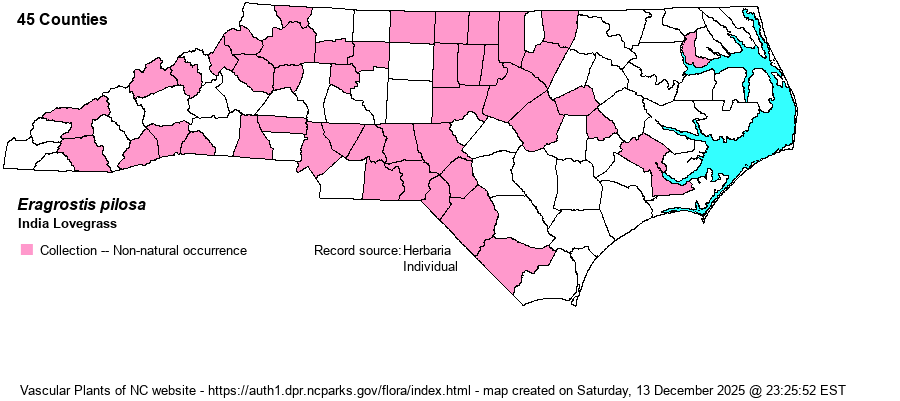| Author | (L.) Palisot de Beauvois | |
| Distribution | Mostly the Mountains and Piedmont; scattered on the Coastal Plain. It is possible that some records mapped below may actually belong to E. minor, which formerly was treated as a variety of E. pilosa.
Native of southern Eurasia; in N.A. mostly in the eastern U.S. | |
| Abundance | Frequent in the Mountains and Piedmont, uncommon in the Coastal Plain. | |
| Habitat | Fields, fallow fields, roadsides, railroads, disturbed areas, etc. | |
| Phenology | Flowering and fruiting July-October. | |
| Identification | E. minor has glandular pits just below stem nodes, absent in E. pilosa. E. pectinacea has first glumes 0.5-1.5 mm long (vs. 0.3-0.6 mm long in E. pilosa). | |
| Taxonomic Comments | Our plants are var. pilosa.
Species in the genus Eragrostis -- the lovegrasses -- often have inflorescences that are larger than the rest of the plant. Such inflorescences are very open and airy, but other species have more contracted inflorescences. Each spikelet is laterally compressed and contains few to many florets, which lack awns. | |
| Other Common Name(s) | | |
| State Rank | SE | |
| Global Rank | G4 | |
| State Status | | |
| US Status | | |
| USACE-agcp | FACU link |
| USACE-emp | FACU link |

